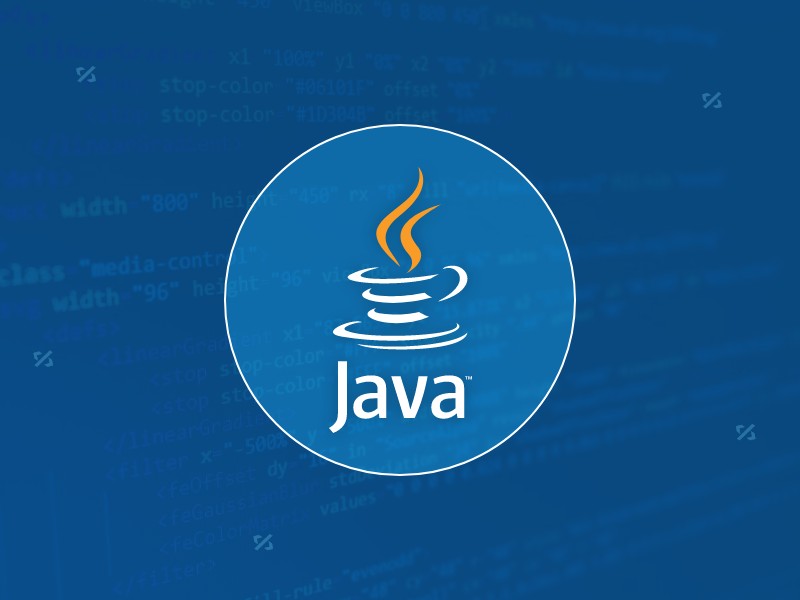HashMap uses a hash algorithm to map keys to array indexes to achieve fast access. 1. First call hashCode() to get the hash value, and then determine the index position through perturbation function processing and modulo acquisition; 2. Use a linked list to resolve hash conflicts. After Java 8, the linked list will be converted into a red and black tree to improve search efficiency; 3. The load factor is defaulted to 0.75 when expanding capacity, and if the threshold exceeds the rehashing value, rehashing will expand the array capacity; 4. The initial capacity can be preset to reduce the number of expansions to improve performance.

Java's HashMap is a very commonly used collection class, and its internal implementation is actually quite clever. It maps keys (Keys) into array indexes through a hash algorithm, thereby achieving fast insertion and search. But how exactly did it? Let's break down several key points.

Hash calculation and array index
HashMap uses an array to store data internally, and each element is a Node (or Entry). When you put a key-value pair, HashMap will first call hashCode() method of key to get an integer hash value, then process the hash value again through a "perturbation function", and finally determine its position in the array (that is, index) through modulus operation.

For example:
Assuming that the length of the array is 16 and the hash value of a certain key is 35 after processing, then the index is 35 % 16 = 3 , so this node will be placed at the subscript of the array as 3.
What should be noted is:

- If two different keys compute the same index, a hash collision occurs
- Java 8 introduces the situation of frequent collisions in red and black trees (I will talk about it later)
How to resolve hash conflicts
HashMap uses linked list method to handle hash conflicts. That is, when multiple keys are mapped to the same array subscript, they are stringed in a linked list.
For example, if you have three key-value pairs, all of which fall at index=5, they will form a linked list at the 5th position of the array. Each time you search, you need to traverse this linked list for key comparison (equals).
Starting from Java 8, if the linked list length exceeds the threshold (default is 8), the linked list will be converted to a red and black tree, which can reduce the time complexity of the search from O(n) to O(log n) and improve performance.
But be aware of:
- The conversion of red and black trees comes at a cost and is only cost-effective when there are frequent conflicts.
- When the number of elements in the tree is reduced to less than 6, it will degenerate back to the linked list again
Scaling mechanism: load factor and rehashing
HashMap is not a fixed size, it will automatically expand according to the amount of data. The key factor that determines whether to expand capacity is the load factor , which is 0.75 by default.
To give a practical example:
If you initialize a HashMap, the default capacity is 16, then when put into the 16 * 0.75 = 12 element, the HashMap will expand to twice the original size (become 32), and recalculate the index of all keys. This process is called rehashing .
Although scaling can avoid too many hash conflicts, it also has costs:
- Need to create a new larger array
- Re-hash all the old data and insert it into the new array
- Multi-threading may also trigger a dead loop (HashMap is not thread-safe)
Tips for setting initial capacity
If you know in advance how many elements you want to put, it is recommended to specify the initial capacity when constructing a HashMap. This can reduce the number of expansions and improve performance.
For example, if you want to put 100 elements, the default load factor is 0.75, then you need at least a capacity of 100 / 0.75 ≈ 134 . To avoid multiple expansions, you can create it directly like this:
Map<String, String> map = new HashMap<>(134);
Of course, you can also leave a little room, and it is no problem to set it to 150 or 200.
Basically that's it. HashMap is very smart, but there are some small details that are easily overlooked, such as the secondary perturbation of hash, the threshold value of the linked list to the red and black tree, the expansion time, etc. Understanding these is still very helpful in writing more efficient code.
The above is the detailed content of How Does Java HashMap Work Internally?. For more information, please follow other related articles on the PHP Chinese website!

Hot AI Tools

Undress AI Tool
Undress images for free

Undresser.AI Undress
AI-powered app for creating realistic nude photos

AI Clothes Remover
Online AI tool for removing clothes from photos.

Clothoff.io
AI clothes remover

Video Face Swap
Swap faces in any video effortlessly with our completely free AI face swap tool!

Hot Article

Hot Tools

Notepad++7.3.1
Easy-to-use and free code editor

SublimeText3 Chinese version
Chinese version, very easy to use

Zend Studio 13.0.1
Powerful PHP integrated development environment

Dreamweaver CS6
Visual web development tools

SublimeText3 Mac version
God-level code editing software (SublimeText3)

Hot Topics
 Difference between HashMap and Hashtable?
Jun 24, 2025 pm 09:41 PM
Difference between HashMap and Hashtable?
Jun 24, 2025 pm 09:41 PM
The difference between HashMap and Hashtable is mainly reflected in thread safety, null value support and performance. 1. In terms of thread safety, Hashtable is thread-safe, and its methods are mostly synchronous methods, while HashMap does not perform synchronization processing, which is not thread-safe; 2. In terms of null value support, HashMap allows one null key and multiple null values, while Hashtable does not allow null keys or values, otherwise a NullPointerException will be thrown; 3. In terms of performance, HashMap is more efficient because there is no synchronization mechanism, and Hashtable has a low locking performance for each operation. It is recommended to use ConcurrentHashMap instead.
 What are static methods in interfaces?
Jun 24, 2025 pm 10:57 PM
What are static methods in interfaces?
Jun 24, 2025 pm 10:57 PM
StaticmethodsininterfaceswereintroducedinJava8toallowutilityfunctionswithintheinterfaceitself.BeforeJava8,suchfunctionsrequiredseparatehelperclasses,leadingtodisorganizedcode.Now,staticmethodsprovidethreekeybenefits:1)theyenableutilitymethodsdirectly
 How does JIT compiler optimize code?
Jun 24, 2025 pm 10:45 PM
How does JIT compiler optimize code?
Jun 24, 2025 pm 10:45 PM
The JIT compiler optimizes code through four methods: method inline, hot spot detection and compilation, type speculation and devirtualization, and redundant operation elimination. 1. Method inline reduces call overhead and inserts frequently called small methods directly into the call; 2. Hot spot detection and high-frequency code execution and centrally optimize it to save resources; 3. Type speculation collects runtime type information to achieve devirtualization calls, improving efficiency; 4. Redundant operations eliminate useless calculations and inspections based on operational data deletion, enhancing performance.
 What is an instance initializer block?
Jun 25, 2025 pm 12:21 PM
What is an instance initializer block?
Jun 25, 2025 pm 12:21 PM
Instance initialization blocks are used in Java to run initialization logic when creating objects, which are executed before the constructor. It is suitable for scenarios where multiple constructors share initialization code, complex field initialization, or anonymous class initialization scenarios. Unlike static initialization blocks, it is executed every time it is instantiated, while static initialization blocks only run once when the class is loaded.
 What is the Factory pattern?
Jun 24, 2025 pm 11:29 PM
What is the Factory pattern?
Jun 24, 2025 pm 11:29 PM
Factory mode is used to encapsulate object creation logic, making the code more flexible, easy to maintain, and loosely coupled. The core answer is: by centrally managing object creation logic, hiding implementation details, and supporting the creation of multiple related objects. The specific description is as follows: the factory mode handes object creation to a special factory class or method for processing, avoiding the use of newClass() directly; it is suitable for scenarios where multiple types of related objects are created, creation logic may change, and implementation details need to be hidden; for example, in the payment processor, Stripe, PayPal and other instances are created through factories; its implementation includes the object returned by the factory class based on input parameters, and all objects realize a common interface; common variants include simple factories, factory methods and abstract factories, which are suitable for different complexities.
 What is the `final` keyword for variables?
Jun 24, 2025 pm 07:29 PM
What is the `final` keyword for variables?
Jun 24, 2025 pm 07:29 PM
InJava,thefinalkeywordpreventsavariable’svaluefrombeingchangedafterassignment,butitsbehaviordiffersforprimitivesandobjectreferences.Forprimitivevariables,finalmakesthevalueconstant,asinfinalintMAX_SPEED=100;wherereassignmentcausesanerror.Forobjectref
 What is type casting?
Jun 24, 2025 pm 11:09 PM
What is type casting?
Jun 24, 2025 pm 11:09 PM
There are two types of conversion: implicit and explicit. 1. Implicit conversion occurs automatically, such as converting int to double; 2. Explicit conversion requires manual operation, such as using (int)myDouble. A case where type conversion is required includes processing user input, mathematical operations, or passing different types of values ??between functions. Issues that need to be noted are: turning floating-point numbers into integers will truncate the fractional part, turning large types into small types may lead to data loss, and some languages ??do not allow direct conversion of specific types. A proper understanding of language conversion rules helps avoid errors.
 Why do we need wrapper classes?
Jun 28, 2025 am 01:01 AM
Why do we need wrapper classes?
Jun 28, 2025 am 01:01 AM
Java uses wrapper classes because basic data types cannot directly participate in object-oriented operations, and object forms are often required in actual needs; 1. Collection classes can only store objects, such as Lists use automatic boxing to store numerical values; 2. Generics do not support basic types, and packaging classes must be used as type parameters; 3. Packaging classes can represent null values ??to distinguish unset or missing data; 4. Packaging classes provide practical methods such as string conversion to facilitate data parsing and processing, so in scenarios where these characteristics are needed, packaging classes are indispensable.






